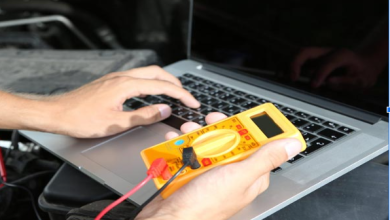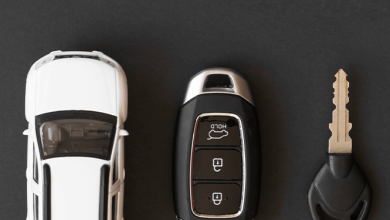7 Ways Machine Learning Is Transforming Portable Mobility Scooters

Portable mobility scooters have emerged as a boon for people with limited mobility in the realm of mobility solutions. These compact scooters give their riders greater freedom by allowing them to travel over a wide range of surfaces. These folding mobility scooters are now more secure and efficient than ever because of the incorporation of cutting-edge technology, most notably machine learning. Let’s look into how machine learning is helping to make these modern mobility aids even safer.
Learning About Transportable Mobility Scooters
Portable mobility scooters have become increasingly popular as an important aid for people with mobility issues, as they are compact and simple to travel. Thoughtfully designed gadgets provide users with increased freedom and comfort, enabling them to move seamlessly in various indoor and outdoor settings. Additionally, these devices enhance mobility, offering a versatile solution for users navigating different environments. With their compact shape and user-friendly features, folding mobility scooters have become a beacon of hope for persons seeking better mobility and greater autonomy in their daily lives.
Machine Learning’s Contribution to Heightened Security
The adoption of cutting-edge machine learning algorithms has significantly upgraded the safety standards of folding mobility scooters, making them more trustworthy and secure for their users. In particular, these advancements have enhanced the reliability and security of the scooters, ensuring a safer experience for users.
Consequently, users can now have greater confidence in the safety features of folding mobility scooters, thanks to the implementation of state-of-the-art technology. These scooters have adopted smart safety features that proactively address potential hazards and problems by continuously monitoring a myriad of data sources and user interactions.
With this forethought and the ability to analyze data in real-time, the scooters can quickly adjust to new conditions, providing a safe and comfortable ride for people with mobility impairments. Users may now set off on trips with a renewed sense of assurance and calm, secure in the knowledge that their security is a top priority at all times.
Automatic Velocity Regulation
The introduction of adaptive speed control methods is a major advantage of using machine learning in foldable mobility scooters. These systems analyze data in real-time to modify the scooter’s speed according to the user’s preferences and the environment, avoiding dangerous accelerations and decelerations.
Identifying and Dodging Dangers
Advanced obstacle recognition and avoidance technology are now standard on folding mobility scooters thanks to the application of machine learning algorithms.
These systems utilize sensors and cameras to detect impediments in the rider’s path and then automatically correct the scooter’s trajectory to avoid them, guaranteeing a trouble-free and secure ride.
Mechanisms for Enhanced Stability
Machine learning has enabled the creation of increased stability mechanisms in folding mobility scooters, considerably reducing the chance of tipping or toppling over, especially while travelling through uneven ground or slopes. These technologies continuously assess the scooter’s stability and make instantaneous modifications to guarantee the rider’s safety.
Warnings for Anticipatory Upkeep
With the help of machine learning, folding mobility scooters can now provide predictive maintenance warnings to their owners, warning them of impending problems and allowing them to schedule repairs in plenty of time. This preventative method aids consumers in keeping their scooters in prime working order and lessens the likelihood of any unanticipated failures or malfunctions.
User Preferences That Can Be Modified
Machine learning has permitted the introduction of customisable user preference settings in folding mobility scooters, allowing users to personalize their riding experience according to their unique demands and comfort levels.
Optimizing each rider’s comfort and safety involves adjusting the scooter to their specific needs, ensuring seamless customization from the height of the seat to the responsiveness of the controls. By tailoring these elements, riders can experience a ride that is both comfortable and safe.
Remote Supervision and Help
Another pivotal development enabled by machine learning is the creation of folding mobility scooters equipped with remote monitoring and assistance functions. This progress underscores the importance of advancing technology in enhancing the capabilities of such scooters. To make sure the user is always safe, these technologies allow caretakers or loved ones to keep tabs on the scooter’s status, monitor the user’s whereabouts, and provide fast aid in the event of an emergency.
Modifications to the Design Based on Data
Portable mobility scooters can be improved by the manufacturer using data and machine learning. Manufacturers may better tailor these scooters to the changing demands and tastes of customers by studying data, feedback, and performance metrics provided by those who use them.
Artificial intelligence (AI) has been easily integrated into foldable mobility scooters, further improving an already high level of safety. Powered by AI that is constantly learning and adapting to human behaviour, these technologies deliver a safe and seamless ride.
The deployment of these smart devices can increase users’ sense of security and confidence while they are on the move by anticipating their activities and removing potential threats before they happen.
FAQs
When folded, can a mobility scooter be used inside?
Folding mobility scooters are ideal for indoor use because of their small size and excellent manoeuvrability.
Can the battery life of foldable mobility scooters be improved by machine learning?
Utilizing machine-learning algorithms to monitor and adjust power consumption and battery management can enhance and extend the battery life of folding mobility scooters. It’s crucial to actively employ these algorithms to ensure optimal performance and increased efficiency.
How can consumers benefit from receiving alerts for predictive maintenance?
Keep users informed about potential issues with their scooters, predictive maintenance alerts notify them in advance. This proactive approach enables users to take preventive measures, minimizing the risk of unexpected breakdowns or malfunctions. Additionally, it ensures a smoother and more reliable experience with their scooters.
Is it possible to adjust the seating position on a folding mobility scooter?
Users can adjust the seat height, position, and other elements of numerous foldable mobility scooters to achieve a ride that is not only more comfortable but also tailored to their preferences. This is particularly important in ensuring an optimal and personalized experience.
Conclusion
In conclusion, the incorporation of machine learning has changed the safety features of portable mobility scooters, making them more reliable, secure, and user-friendly. These scooters provide an unprecedented level of security and comfort for people with mobility issues thanks to features like adaptive speed control, obstacle detection, improved stability mechanisms, predictive maintenance alerts, user-specific preferences, remote monitoring, data-driven design improvements, and the seamless integration of artificial intelligence.
The future of folding mobility scooters is more promising, offering increased accessibility and safety for users worldwide as technology continues to advance.



